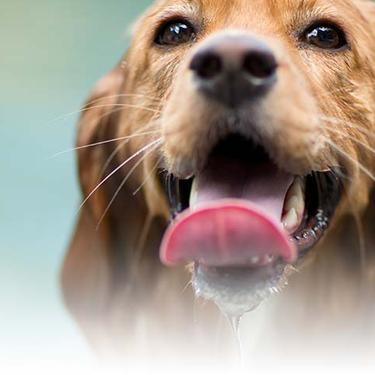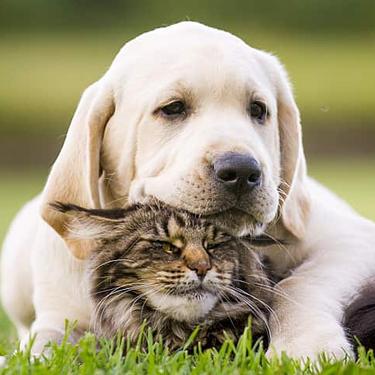
-
Find the right food for your petTake this quiz to see which food may be the best for your furry friend.Find the right food for your petTake this quiz to see which food may be the best for your furry friend.Featured products
 Puppy Lamb Meal & Brown Rice Recipe
Puppy Lamb Meal & Brown Rice RecipeVital nutrients to support 5 essential building blocks for lifelong health
Shop Now Hill's Science Diet Adult 7+ Senior Vitality Small & Mini Chicken & Rice Recipe Dog Food
Hill's Science Diet Adult 7+ Senior Vitality Small & Mini Chicken & Rice Recipe Dog FoodImproves everyday ability to get up & go
Shop Now Puppy Large Breed Chicken & Brown Rice Recipe
Puppy Large Breed Chicken & Brown Rice RecipeVital nutrients to support 5 essential building blocks for lifelong health
Shop NowFeatured products Adult 7+ Chicken Recipe Cat Food
Adult 7+ Chicken Recipe Cat FoodSupports energy level and beautiful fur in mature cats
Shop Now Adult Sensitive Stomach & Skin Cat Food
Adult Sensitive Stomach & Skin Cat FoodHighly digestible food that is gentle on the stomach. Nourishes skin & promotes lustrous fur.
Shop Now Adult Indoor Chicken Recipe Cat Food
Adult Indoor Chicken Recipe Cat FoodSupports energy level and beautiful fur in indoor cats
Shop Now -
Dog
- Dog Tips & Articles
-
Health Category
- Weight
- Food & Environmental Sensitivities
- Urinary
- Digestive
- Joint
- Kidney
-
Life Stage
- Puppy Nutrition
- Adult Nutrition
Cat- Cat Tips & Articles
-
Health Category
- Weight
- Skin & Food Sensitivities
- Urinary
- Digestive
- Kidney
-
Life Stage
- Adult Nutrition
Featured articles Water
WaterDiscover why water is the most important nutrient for your dog or cat to live a healthy life. Find out how much water your pet should consume each day.
Read More Pet Food Storage Tips
Pet Food Storage TipsDiscover how and where to store your dry, as well as canned, dog and cat food. Learn how to find the "best before" dates on all Hill's pet food packaging.
Read More The Incredible Science Behind Your Pet's Microbiome
The Incredible Science Behind Your Pet's MicrobiomeLearn what a pet's microbiome is, how it contributes to your pet's gut & overall health, and why nutrition is important in maintaining healthy microbiomes.
Read More -


One new dog at a time is generally challenging enough for most pet parents, and experts don't recommend adopting two puppies at once. But if you've already brought home two pups, you can double the fun with the right training and socialization techniques.
Are you ready to learn how to train two dogs at once? Let's learn how here.
Training Two Puppies: What Could Go Wrong?
Adriana Jerez, the owner of Loving Paws Dog Training in Charlotte, NC, adopted two German shepherd puppies at the same time. In general, she says, it's more difficult to adopt two puppies at once. But by understanding and anticipating the special challenges ahead of time, owners can train and socialize both dogs to be amazing family pets.
Jerez says that along with the practical considerations of adopting two puppies (How expensive will vet care be? Do I have the room?) raising them has some special challenges:
- Two puppies might be more likely to bond to each other, rather than to their new human family.
- Puppies adopted together might be anxious or timid when separated.
- Dogs are individuals, so each puppy will learn and train at his own speed.

Training Strategies
If you have adopted two puppies, there are steps you can take to curb behavior issues and help with training multiple dogs at once. Many of these suggestions involve the puppies spending time independently:
- Crate the dogs separately at night: Crate training helps with safety, damage control, house training, and traveling. Your new puppies should be crated separately and kept close enough for you to hear them at night if they need you.
- Train them individually: When training two puppies, the dogs should attend training classes separately. Alternatively, if you're training at home, work with one dog while the other is with a human family member in a separate room. You can also put each puppy on a long, comfortable tether outside to get them used to watching each other receive attention.
- Socialize and play with them separately: This fosters pup independence and lets the more timid dog play without competing for your attention. You can try taking one puppy at a time with you on a short outdoor errand, or bring him over to a puppy-proofed friend's house for a meet-and-greet.
- Walk them one at a time: Give each dog your undivided attention on his own daily walk. Even with separate handlers, if you always walk your pups together, "the less confident pup will come to rely on the presence of the more confident one to be brave in the real world," writes Pat Miller, the training editor for Whole Dog Journal. This also gives each puppy time to sniff and meet other dogs in his own way.
You're not trying to keep these two potential best friends apart from one another. Rather, you're just giving them each their own space to be who they are as they develop into well-adjusted adult dogs. As you start to understand their independent personalities and where each one shines you can start to incorporate more group activities that allows them to train as one. Just always make sure to keep each one their own love and attention, so that one dog doesn't develop dominance over the other, or one doesn't get jealous of the other. Training two puppies just require extra diligence in ensuring that each pup is given equal attention.


Tasty Tips
A Tail of Two Dogs
You should always consider the time commitment and care costs of a new furry friend before you adopt. Give even more thought to bringing home two. If you do decide to double down on dogs, you can succeed by treating them as individual personalities, by properly training them, and by spending time with them around people and other dogs. Taking these steps will help bond your dogs to you for life and put a foundation into place that helps your new puppies wiggle their way into a happy, well-adjusted life as the newest members of your family. Who knows, maybe you'll even become the next expert on how to train two puppies at once, and people will start coming to you for help!


Kara Murphy is a freelance writer and pet parent who lives in Erie, Pa. She has a goldendoodle named Maddie.
Related products

Improves everyday ability to get up & go

Improves Everyday Ability to Get Up & Go

Vital nutrients to support 5 essential building blocks for lifelong health

Vital nutrients to support 5 essential building blocks for lifelong health
Related articles

Learn how to stop your dog from begging at the dinner table, and understand how it can help contribute to his health.

Understand the role that Omega-6 and Omega-3 fatty acids play in your dog's overall health, and how you can ensure they are getting enough.

Learn basic steps & precautions for treating a cut on your dog, including what you can put on the cut, and when you should take them to the vet.

Discover fun and engaging games and other ways to help your dog exercise, keeping him happy and healthy.

Put your dog on a diet without them knowing
Our low calorie formula helps you control your dog's weight. It's packed with high-quality protein for building lean muscles, and made with purposeful ingredients for a flavorful, nutritious meal. Clinically proven antioxidants, Vitamin C+E, help promote a healthy immune system.
Put your dog on a diet without them knowing
Our low calorie formula helps you control your dog's weight. It's packed with high-quality protein for building lean muscles, and made with purposeful ingredients for a flavorful, nutritious meal. Clinically proven antioxidants, Vitamin C+E, help promote a healthy immune system.

